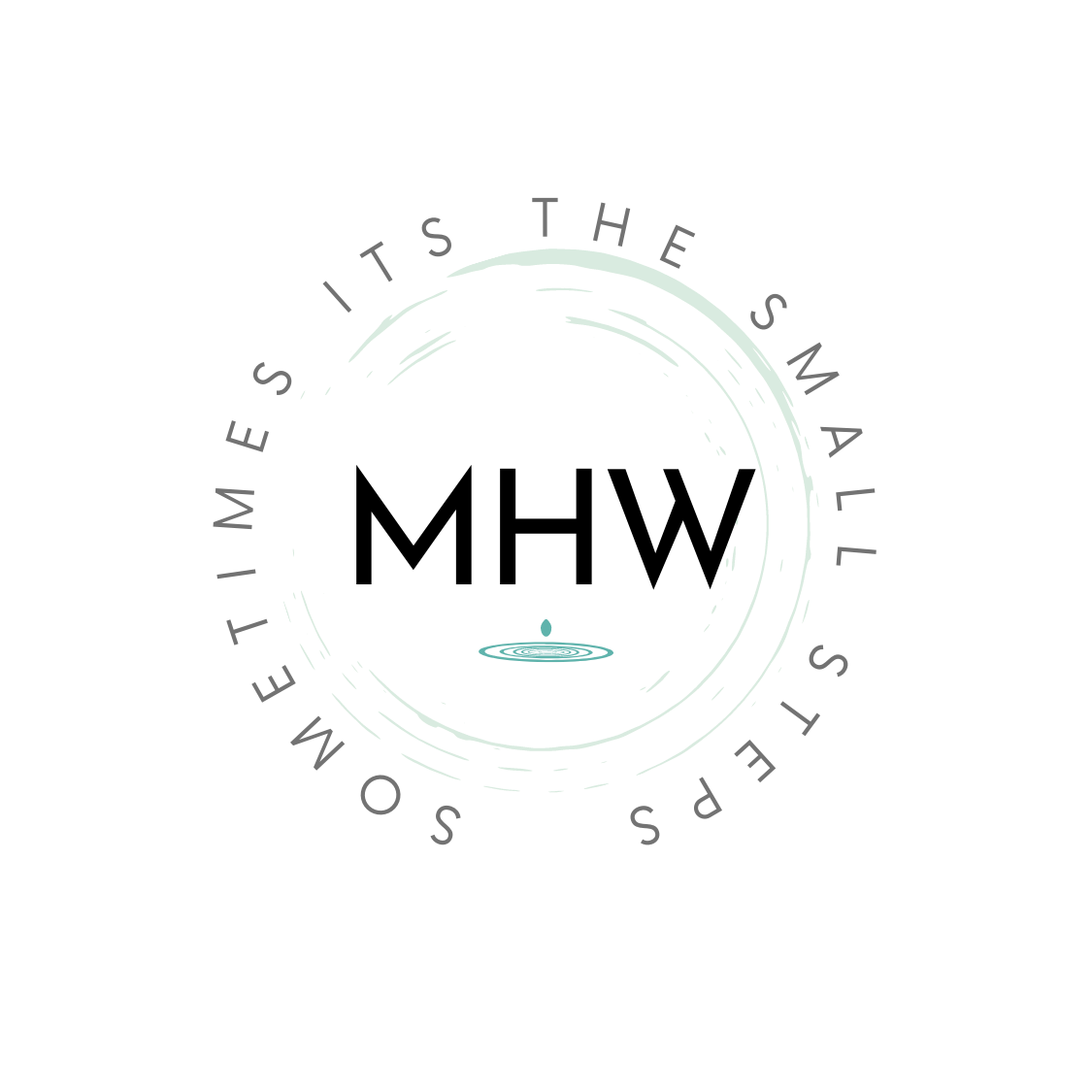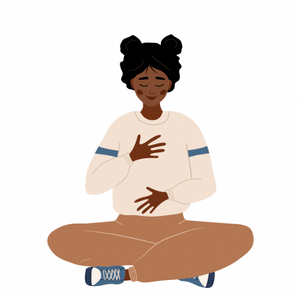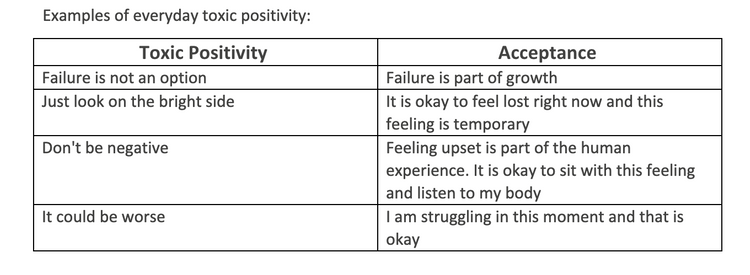Sometimes it is hard to know the difference between acceptance and toxic positivity. Often when we attempt to turn our minds towards acceptance, we can accidentally land in toxic positivity instead. One reason for this is because our society promotes toxic positivity, we hear it everywhere, on social media, on the shows we watch, from friends and family, and often in the stigma surrounding mental health and wellbeing.
In this post we will be looking at the difference between radical acceptance and toxic positivity, how to spot the difference and how to be mindful of toxic positivity in our lives and in our thoughts.
What is radical acceptance?
Radical Acceptance is a conscious decision to let go of fighting reality. Acceptance takes commitment and effort and often requires us to move out of our comfort zone. It means acknowledging that experiencing pain (physical and emotional) is sometimes unavoidable and is part of the human experience. We practice acceptance because: rejecting reality does not change reality, we cannot change our reality unless we accept it first, not all pain can be avoided, rejecting reality leads us to suffering and refusing to accept reality can keep us stuck.
Acceptance is an active choice; we are choosing to accept our current reality even if we do not like it and even if it hurts. You can think of it like coming to a fork in the road and deciding to turn towards the path of acceptance, away from the path of rejecting reality. It is key to remember that radical acceptance is not approval, it is not liking or feeling good about reality, it is not passive, and it is not being against change.
Radical acceptance is NOT about dwelling in feelings or pain IT IS about accepting them as part of life and learning to hold space for these experiences!
What is Toxic Positivity?
Toxic Positivity is a form of non-acceptance. It is a belief that a happy and optimistic state is possible across ALL situations and is the answer to all sorrow and pain. It is the idea that “negative emotions” can be avoided by making everything into a positive. Often this mindset idealizes feeling happy and aligns it with ideas of success. Emotions, even ones that are perceived by society to be “negative” are a part of being human. They are an unavoidable part of our reality. Emotions are your nervous system communicating with your brain and therefore essential information from a biological level. By avoiding this information using toxic positivity we are likely to struggle more with regulating our feelings and supporting our bodies. Toxic positivity leads to minimization, invalidation, and suffering (non-acceptance).



